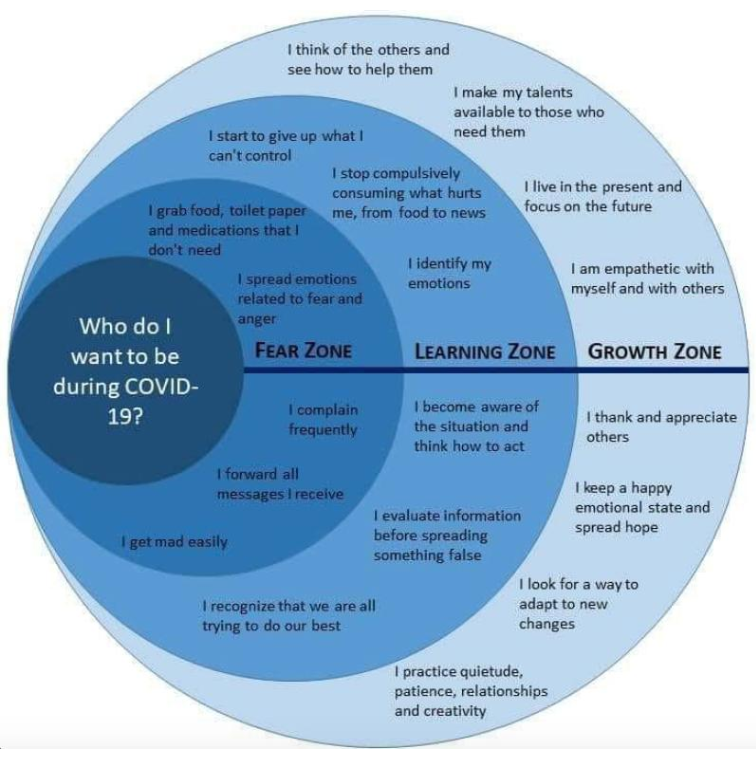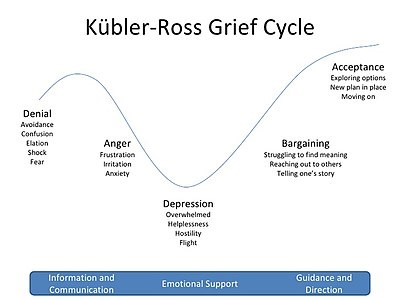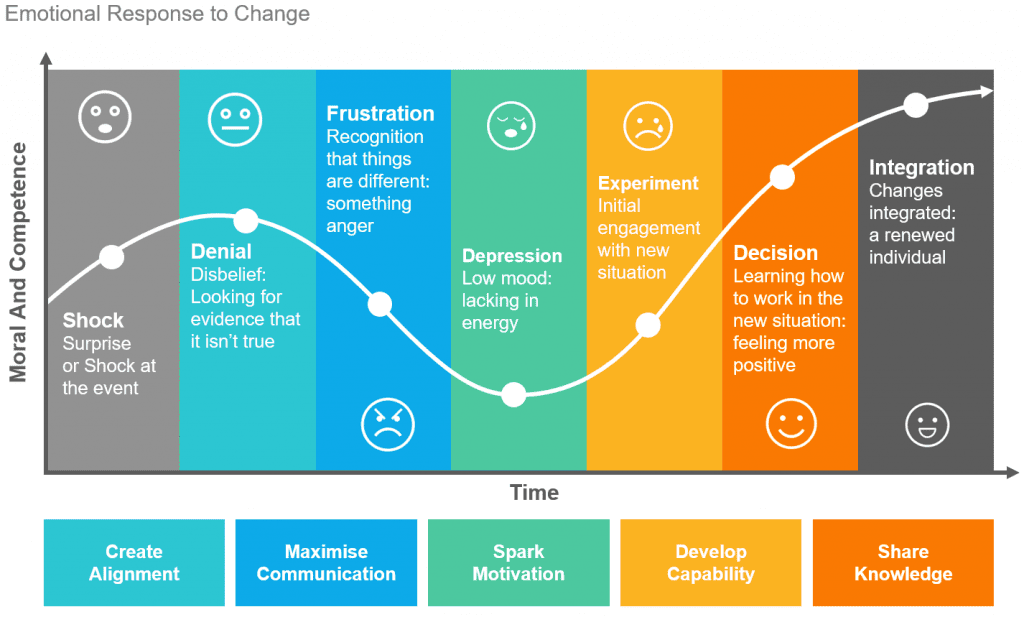Clearly the Coronavirus has meant massive changes to how we work and live our lives. I’ve come across two models you might find helpful as we all adjust to new ways of living.
Model 1
On LinkedIn I saw the diagram below posted by Dr Celine Mullins. She had not been able to identify its source but thought it was a pretty good way to look at how we might react to the current crisis.

I agree with her observation that as with any “stages” type models we can move between stages on any given day, week or month, and often very quickly. Having said that I certainly like to think we can all aspire to spend a lot of time in the growth zone.
There may be some other words you would put in each of the zones that resonate with you. For example you might say in respect of the growth zone “I am finding new ways to connect with clients and to understand even better what their needs are.” Or, “I am taking this opportunity to find improved processes in my business.” Or perhaps” each day I call at least one friend to check they are OK.”
Here are some questions we might ask ourselves:
- What fear have I been able to identify and put behind me?
- What is one new thing / skill I have learned?
- What is one thing I have done which has seen me grow as a person?
It has been often said that we get to choose our attitude, or we get to choose our mindset. Surely that has never been more true than in the current crisis. I’m choosing a positive mindset and taking the opportunity to complete a few projects I had previously felt I did not have time for. I may be missing out on some other things but it feels really good to be getting these projects done.
What mindset or attitude have you chosen?
Model 2
One often talked about model when it comes to change is the Kübler-Ross Model. This was named after a Swiss American psychiatrist Elisabeth Kübler-Ross who wrote about it in her 1969 book Death and Dying. In essence, she said there are five stages that a person may go through in response to being terminally ill or losing a loved one.
Later she pointed out that the stages are not necessarily experienced in a linear way and a person may jump back and forth to some extent. This notion of stages being non-lineal is the same as we talked about in our first model. There has also been some doubt cast as to whether there is a body of evidence to support the model and yet it seems to me that it makes sense and can be useful.

What has also happened is that the model has been played around with and extended by others for broader use in how we respond to change. The diagram below is a summary of a popular version of the model as modified. It has morphed from a grief model to a change model.
Kübler-Ross Change Model

Similar to our first model I can see how this model maps against many of our experiences in the current crisis and validates the emotions we are experiencing.
In my mind both these models are useful because they provide a way for us to reflect on our own attitudes and behaviours (and those of others around us) and to create some awareness that it is ok to experience these feelings. Having self awareness supports us to shift from a not so great place to a better place, so to speak.
I think both models show us there is light at the end of the tunnel and we can and will adapt to the changes the Coronavirus crisis has forced upon us.
